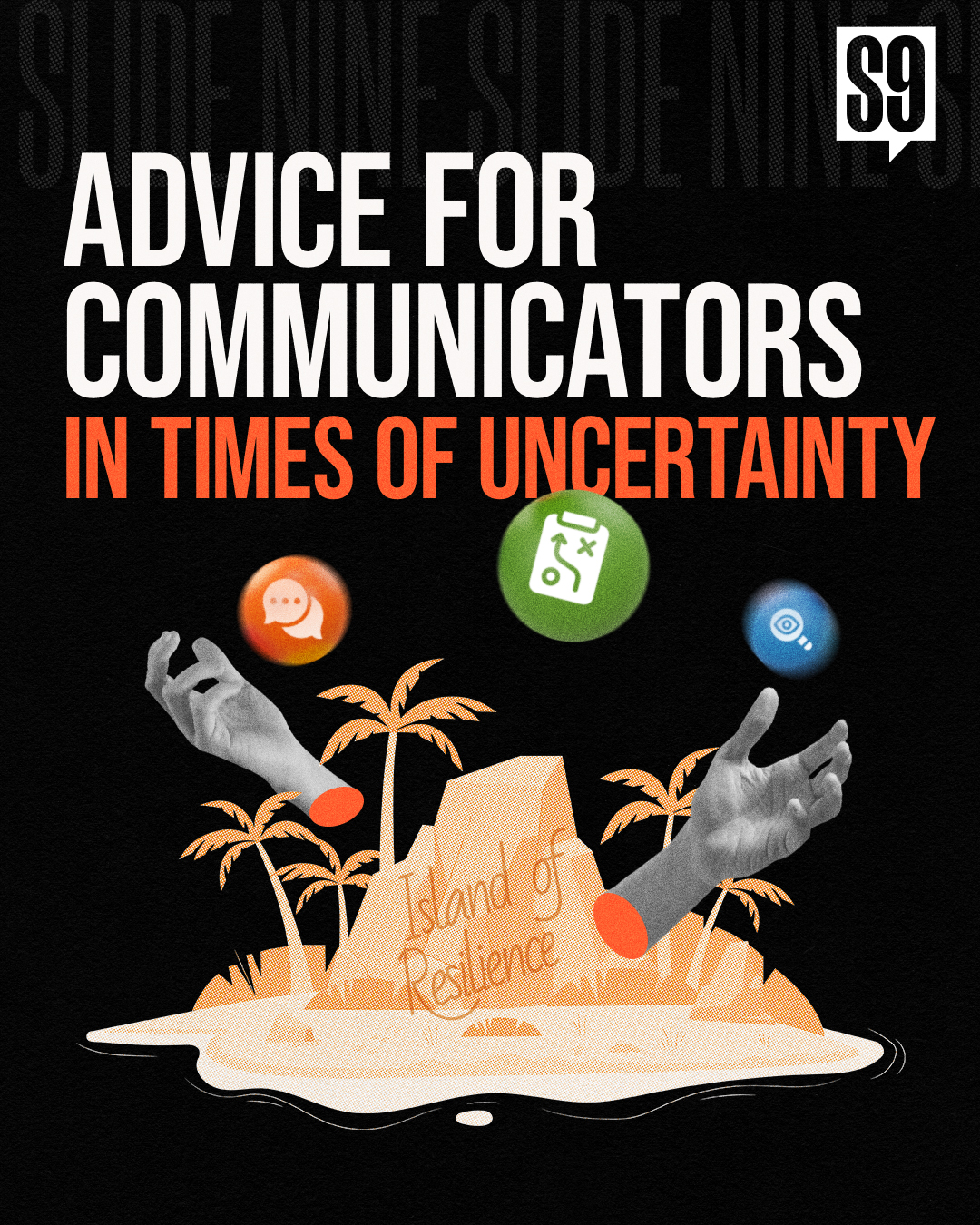

by Nigel Becker
Recently, one of our clients shared an insightful quote from the Roman writer Publilius Syrus: “Anyone can hold the helm when the sea is calm.” Publilius lived more than two millennia ago, but that quote is just as relevant today. It’s easy — well, easier — to communicate when things are going well. But lately? It’s been more complicated.
No matter the industry (e.g. healthcare, manufacturing, nonprofits, public affairs, etc.) the past few years have been anything but predictable. Communicators are juggling tough questions and shifting priorities. But even in the uncertainty, there’s a real chance to build stronger relationships with the people who matter most: your customers, your team, and your community.
1. Communicate Clearly and Empathetically
When things feel uncertain, people look for clarity—and they often turn to the organizations they trust to help make sense of it all. That’s why your communication strategy matters. It should acknowledge that while your organization is navigating its own challenges, the people you’re communicating with are likely dealing with their own.
Nail polish brand Holo Taco recently delivered a masterclass in clear, empathetic communication. A simple Instagram post, “Providing Transparency on Pricing Changes,” used plain language to explain how tariffs and economic unpredictability have raised production costs, then broke down what each item will cost beginning July 31 — and which items won’t see a price increase.
They paired the announcement with a reveal of new rewards program features to help offset the increase. The comments section was full of customers thanking the brand for its transparency. Imagine how customer reaction might have been different if the brand had instead increased prices silently.
If your organization can offer clarity and reassurance instead of adding to the noise, you have a real opportunity to deepen trust and strengthen your relationships with the people who matter most.
2. Be Transparent
People inside and outside your organization will look to you for guidance during uncertain times. If your response is silence or vague statements, it can create confusion—and once rumors or speculation start, they’re hard to undo, even with the facts.
Instead, try to anticipate the questions your stakeholders will have and offer clear, timely information. What do customers need to know about pricing, availability, or service changes? What do employees need to hear about budgets, new procedures, or what’s ahead? The more clarity you provide, the more trust you build.
In May, while discussing potential tariff impacts, Target CEO Brian Cornell said that price increases were a “very last resort” while also leveling with his audience about the uncertainty: “The difficulty level has been incredibly high given the rates we're facing and the uncertainty about how these rates in different categories might evolve.”
Similarly, in response to a decline in Q2 sales, Mattel CFO Paul Ruh explained that the company didn’t expect any additional price hikes this year, and outlined the company’s plan to keep almost half of its U.S. products retailing for under $20.
You don’t need to have everything figured out. What matters is communicating honestly about what you do know, what you’re still working through and what it means for your audience.
3. Make a Plan Based on This Experience
We always advise clients to build a robust crisis communication plan so when a crisis hits, they’re ready for it. The same applies for times of uncertainty.
This may be the first time in recent memory that your organization has faced certain challenges, but it may not be the last. Take note of how your team is handling the uncertainty, what’s going well and where there’s opportunity to improve. Have you clearly communicated the chains of command and who the designated spokesperson is? Are you hearing any recurring questions or comments from stakeholders?
Keeping track of your successes and growth opportunities as you navigate this time will help as you prepare for future challenges.